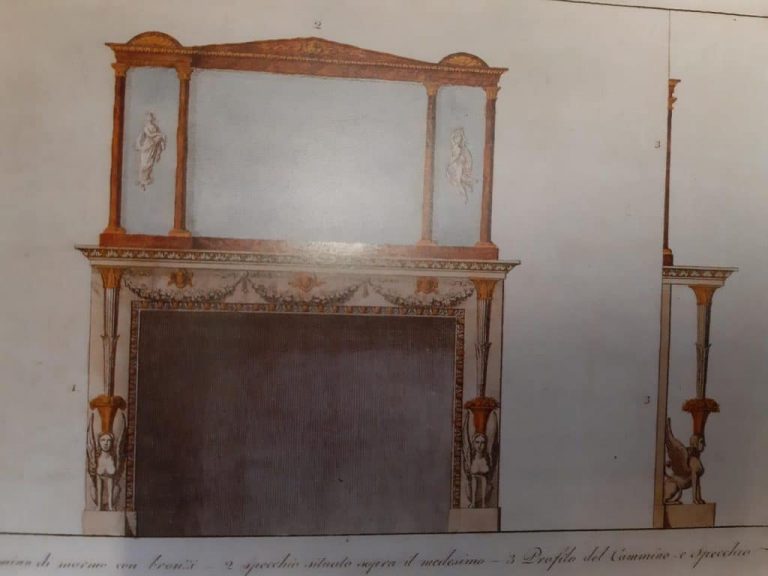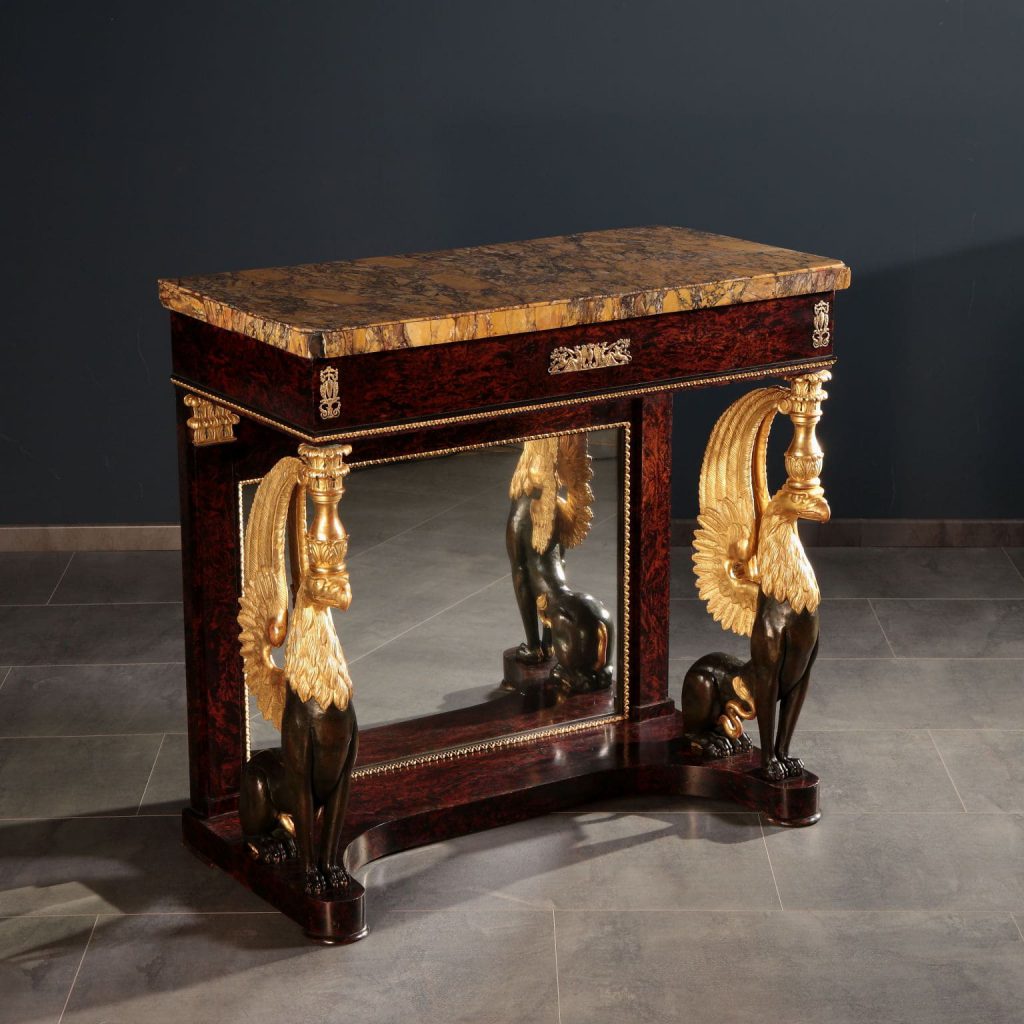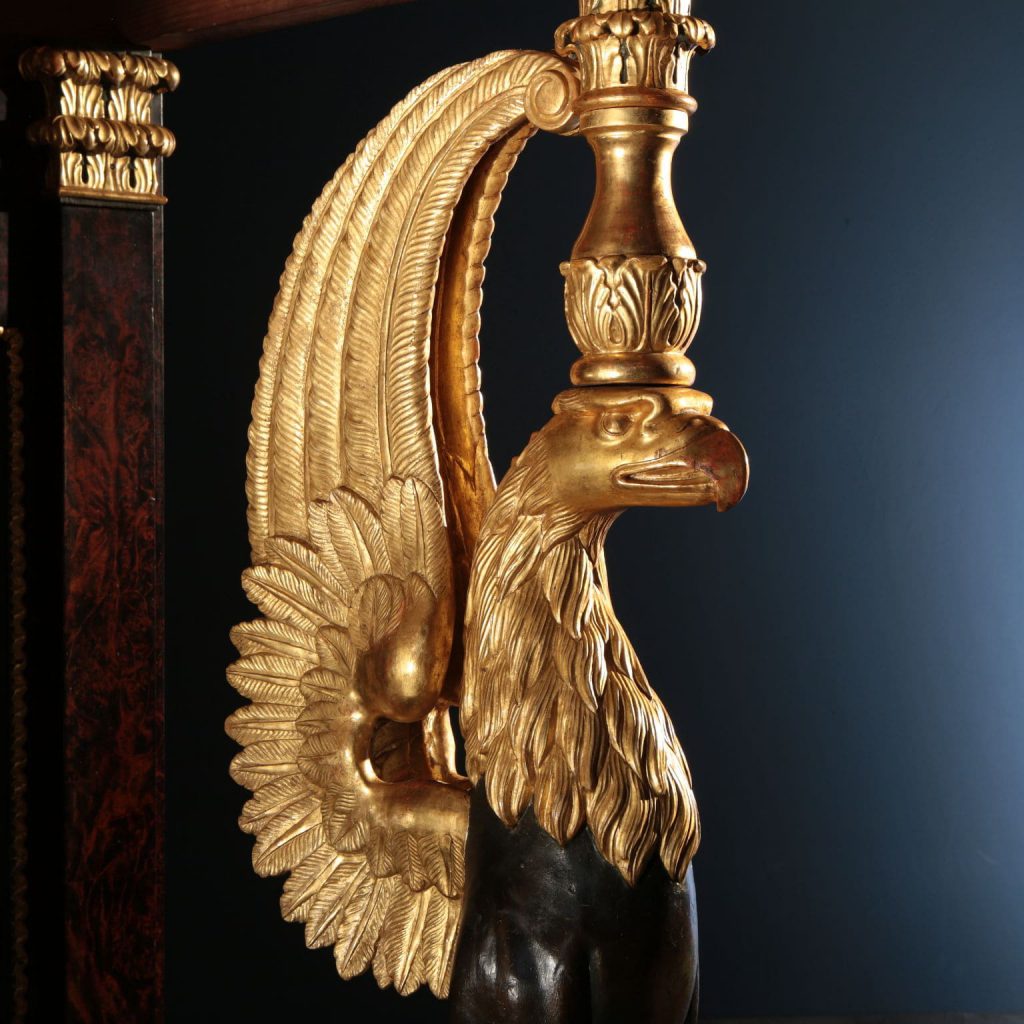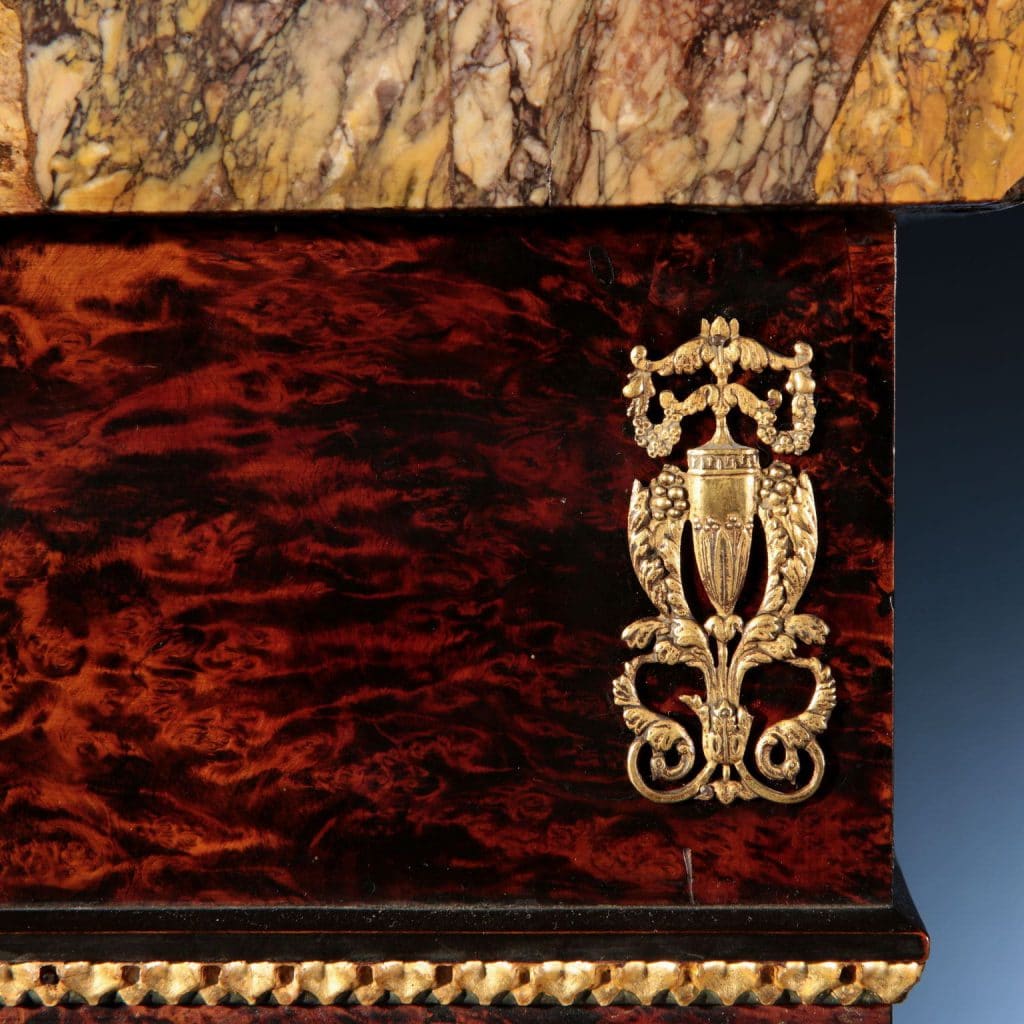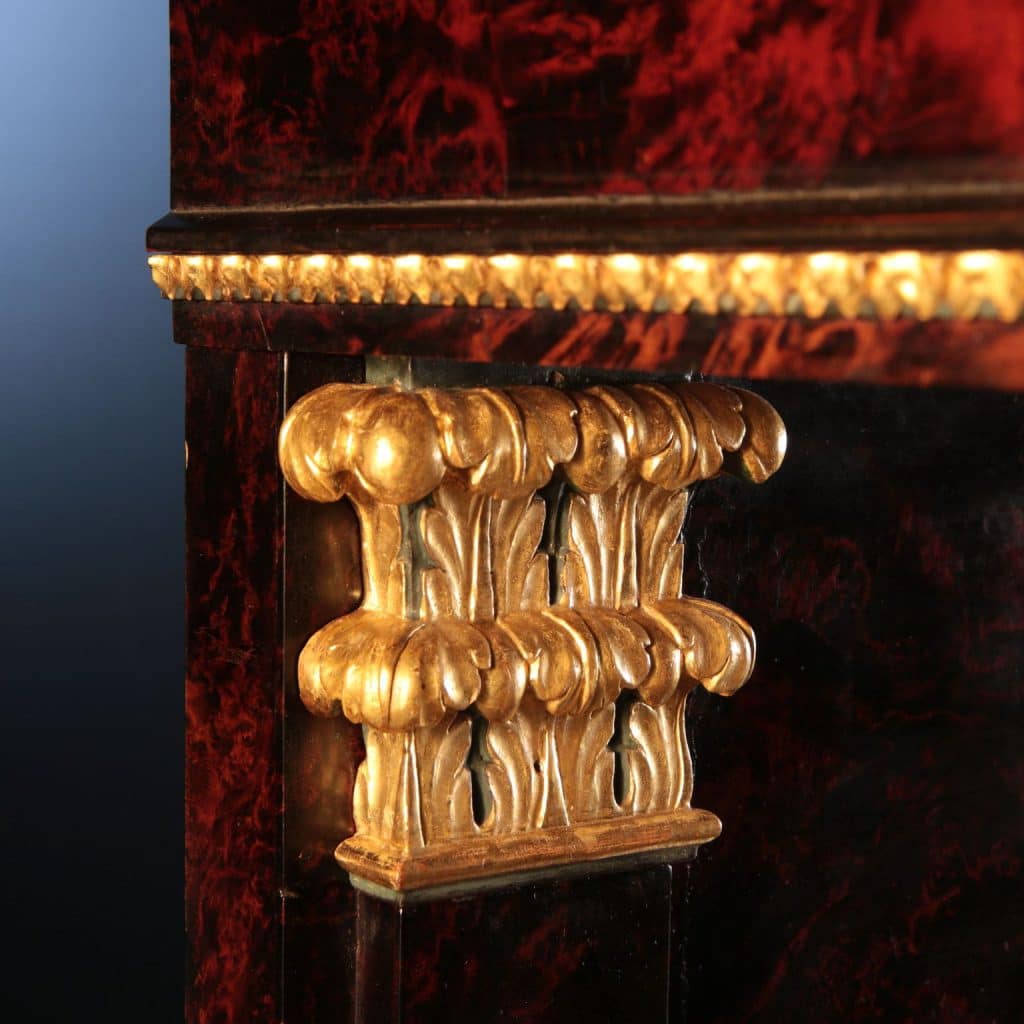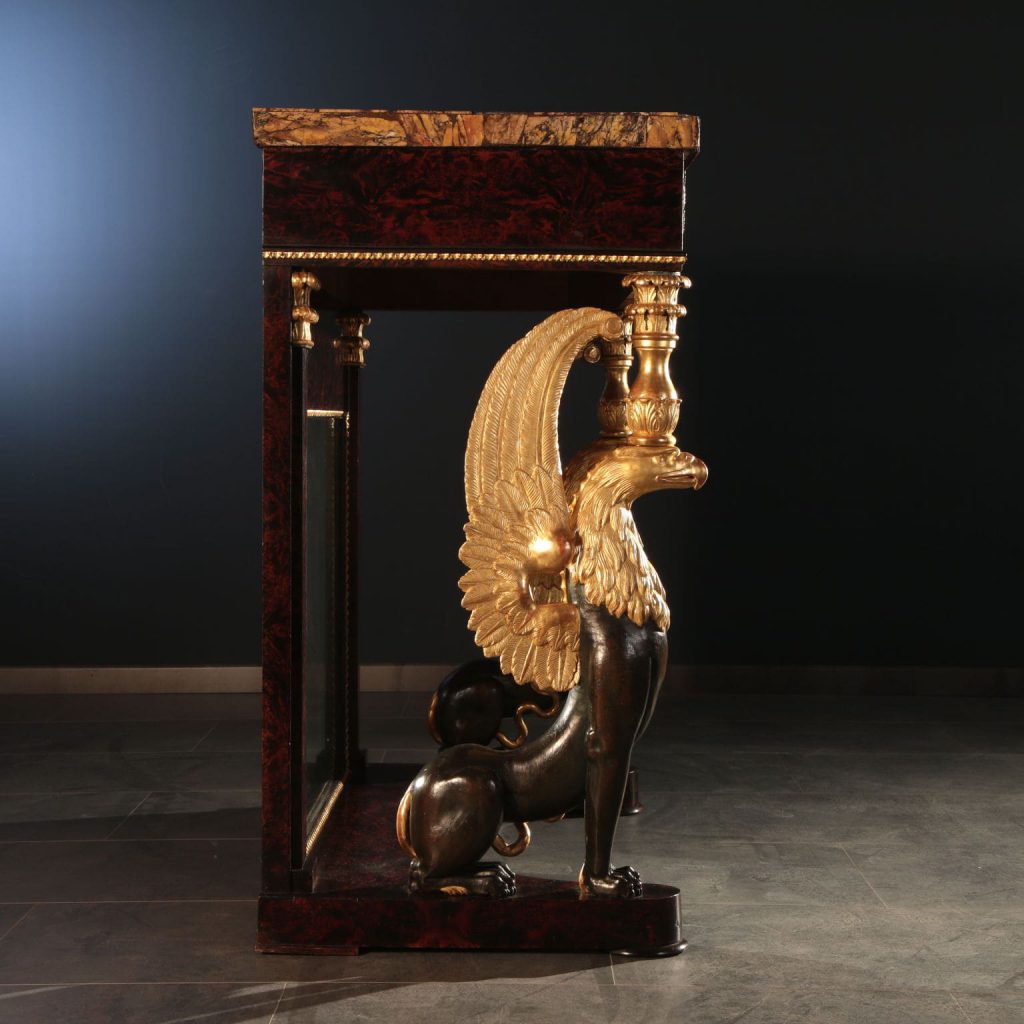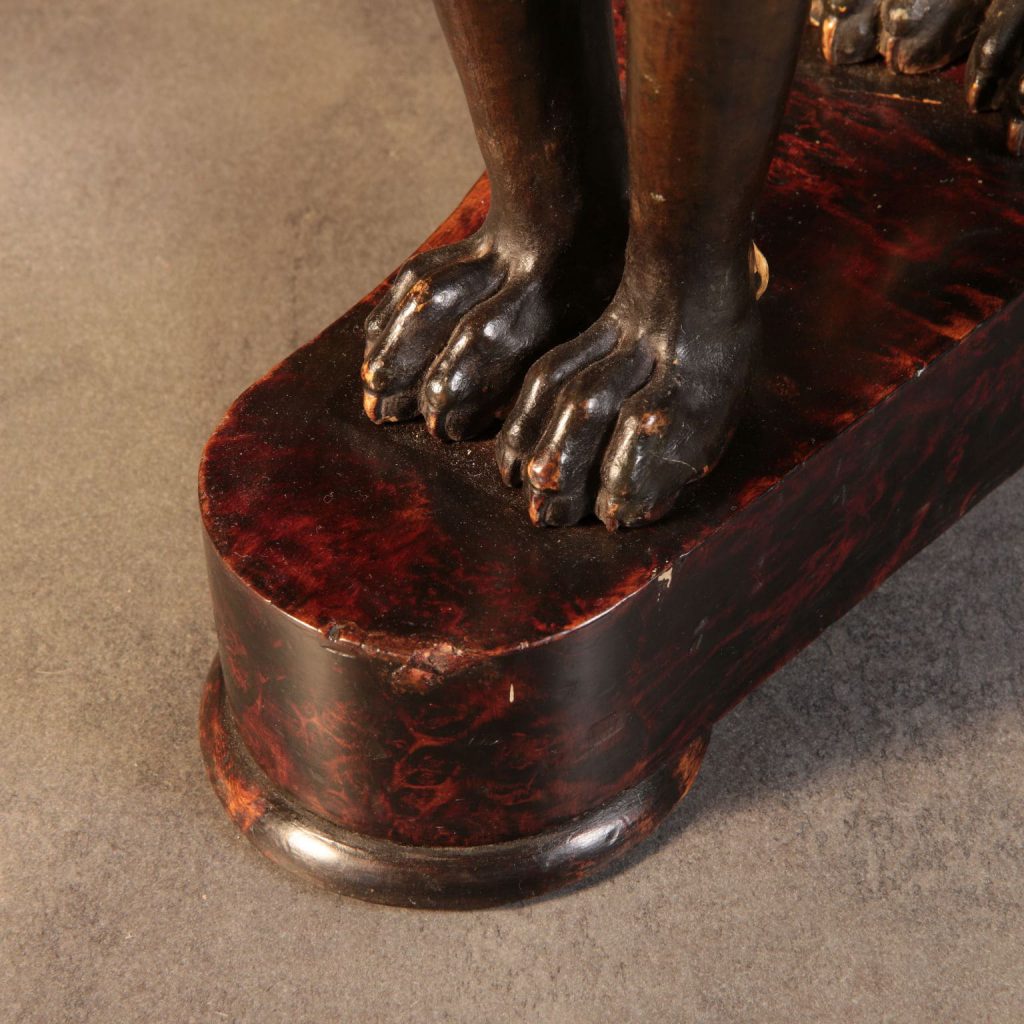Parietal console
Lucca, 1820 ca.
Description:
Wall console, veneered top in antique Siena Yellow marble, resting on a high band supported by a bottom composed of two pilasters with carved capitals and mirror inserted in a carved frame and, on the front, resting on a shaped base, two standing griffins with carved columns. The griffins have the body of a feline lacquered to imitate burnished bronze, with the exception of the tail, which is golden like the wings and the plumage that covers the neck and head; the carved columns that rest on the head of the griffins like the other carved parts are gilded with green lacquered bottoms.
The whole surface is veneered in briar, on the front band two specular bronzes adorn the ends while in the center a chiseled and gilded bronze depicts a vase contrasted by two vestals holding tendrils with vine leaves with which they teach two lions. The bronzes are finely chiseled and gilded, the gilding of the carvings are leaf and the mercury mirror. The top is in stone veneered in Giallo Siena, the structure of the furniture in pine.
Dimensions: 82.5 x 97 x 49 cm
Historical-stylistic analysis:
The piece of furniture described here belongs to that historical period, between the second and third decade of the nineteenth century. which sees the end of a period, that of the Napoleonic domination which had produced valuable works in the artistic field and also in furniture in Florence. It is also for this reason that the return of Ferdinand III (1814-1824) and then of Leopoldo II (1824-1836), will not bring about immediate changes in the taste of furniture. Also in Lucca, Maria Luisa di Borbone, in the renovation of the Ducal Palace of Lucca, will entrust the direction of the works to Lorenzo Nottolini; it is significant that Nottolini himself will also be a designer of furnishings still very much indebted to the late Empire taste and will rely on Jean Baptiste Youf, among others, the Parisian cabinetmaker, the main exponent of the Napoleonic taste in Tuscany, for the realization of the furniture.
The console described here is nearby both in a drawing for a fireplace, part of a collection of models at the Academy of Fine Arts in Florence, printed by Giuseppe Landi in 1816; in this drawing two winged sphinxes and canophores similar to the two griffins decorate the pilasters of a fireplace. Then there is a console drawing, in pencil by Lorenzo Nottolini, kept in the State Archives of Lucca c. 1818-20. In this project, two pairs of sphinxes rest on a shaped base with flattened ball feet like the one in the description.
Again griffins hold a pair of consoles today in Palazzo Pitti, but coming from the “Salone delle Guardie” of Palazzo Ducale in Lucca. In the Palazzo Pitti in Florence, there is a precious semi-precious stone worktop supported by a table carved with three griffins, a work of around 1826.
It must be said that the taste of alternating golden parts with green lacquer parts was widespread, not only but above all in Lucca. Based on these comparisons, in our opinion it is correct to date the piece of furniture described here between the twenties and thirties of the Lucchese production. However, the quality not only of the design of the furniture, but also of the materials used, should be emphasized, the briar, chosen with great care, looks like a warm leather, the bronzes are very refined and made with a very accurate chisel. Marble is the most precious material, in this case it is a highly sought-after stain spread out in pieces without being able to marry the veins, a factor that leads us to believe that it is a piece chosen as the result of ancient finds and used specifically for this. realization.
Reference bibliography:
– Simone Chiarugi, Botteghe di Mobilieri in toscana, ed.S.P.E.S. 1994
– Enrico Colle, Il mobile neoclassico in Italia, ed. Electa 2005
– Enrico Colle, I Mobili di Palazzo Pitti, il secondo periodo lorenese 1800-1846, ed. Centro Di 2010
– Enrico Colle, Il Mobile di corte a Lucca (1805-1847), ed. Maria Pacini Fazzi editore 2005
– Enrico Colle, Il Mobile Lucchese, ed. Maria Pacini Fazzi editore 2009
- Parietal console

Antiques, Art and Design
FineArt is the new ambitious Di Mano in Mano project that offers an exclusive choice of antiques and design works, presenting them for their singularity and uniqueness.

